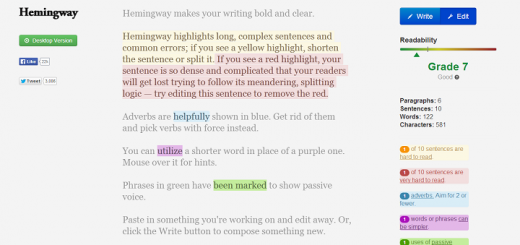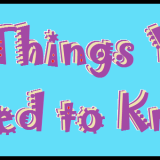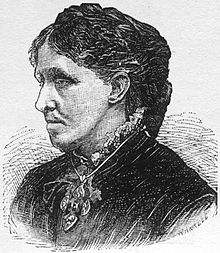The Editing Cycle #1 – Sentence Structure
For our first session of The Editing Cycle, we are going to focus on fiction, more specifically, on sentence structure.
Sentence Structure
When writing a first draft, we are eager to get the words down on paper before they fly away from us and this can result in sloppy sentence structure, whether it’s a collection of sentences all the same length, or an over-use of adverbs. There is a lot to consider during the editing process, but this is a good place to start because it can be corrected without creating a domino effect. This is a term you will become familiar with, if you read more of my articles, as I will later explore how changes to plot or character can effect the structural integrity of your writing.
But for now, let’s concentrate on sentence structure.
The Fixing Room
I’m going to show you my editing process and then I’ll explain what changes I have made and why:
1.
I’d always been really in to witchcraft. It seemed cool, you know? Tarot cards; voodoo; herbal remedies. I really wanted to make it work because then my life wouldn’t suck so bad. That was the start of the Silver Cauldron Club.
2.
I’d always been
reallyin to witchcraft. It seemed cool,you know?[- and useful – a practical solution to the boys with heads too big for their necks and the plastic girls in want of heart and flesh. Very Wizard of Oz, if you’ve heard of it.] [I tried]Ttarot cards; voodoo [dolls]; herbal remedies. Ireallywanted[tried] to make it workbecause then my life wouldn’t suck so bad[and I tried to make it real and hardest of all, I tried to make it popular]. That was the start of the Silver Cauldron Club.
3.
I’d always been in to witchcraft. It seemed cool – and useful – a practical solution to the boys with heads too big for their necks and the plastic girls in want of heart and flesh. Very Wizard of Oz, if you’ve heard of it. I tried tarot cards; voodoo dolls; herbal remedies. I tried to make it work and I tried to make it real and hardest of all, I tried to make it popular. That was the start of the Silver Cauldron Club.
Repetition
In the above example, the author is very fond of the word ‘really’ and that’s a problem. There are some words like ‘just’ or ‘really’; ‘quite’ or ‘now’ which squeeze their way into more sentences than they ought to and very rarely add value to the writing. The first point of call is to read through your sentences and take out any words which are unnecessarily bulky or which you have used too often.
On the flip side, repetition is a useful tool for building tension. The key to getting it right is in choosing what word to repeat; the number of times and the placement in your sentence.
You need a word with the right sound and the best way to know what sounds right is to try several and read them aloud. For example, I could replace the above repetition of ‘tried’ with ‘wanted’ but that double syllable would make it an awkward transition: I wanted to make it work and I wanted to make it real and hardest of all, I wanted to make it popular.
The number is a more exact science. As a general rule, you don’t want to repeat a word more than four times and the longer or more unusual the word you are repeating, the less you should repeat it. For example, I repeat tried four times in two sentences. If I was using the word inconceivable, I would use it no more than two times in as many sentences. If you have a single sentence and a single syllable word, then go for the magic rule of three.
Sentence Lengths
In the first draft, the sentences vary somewhat, with the longest at fifteen words and the shortest at five, but the paragraph is composed of four short sentences and one medium. This doesn’t give enough opportunity for building tension and it makes the writing flat.
By adding more variety in the second draft, the last sentence is given more emphasis and the writing throughout is more engaging and has a stronger energy.
Assemble
When constructing a sentence, we use a combination of nouns, pronouns, adjectives, verbs, adverbs, determiners, prepositions and conjunctions. A basic sentence might be represented as: [adverb determiner adjective noun verb preposition determiner noun] or [slowly the brown dog jumped through the hoop].
When placing sentences beside each other, we need to take care that they don’t share the same basic structure, otherwise our writing will become stiff and unnatural, like the following passage:
Quickly I ran through the woods. Loudly I charged into the clearing. Brashly I approached the man.
[adverb pronoun verb preposition determiner noun. adverb pronoun verb preposition determiner noun. adverb pronoun verb determiner noun.]
Instead, we should aim for as much variety in our assemble, as in our sentence lengths:
John slowly threw the ball to Peter as he looked up at the sky. What if it rained today? He didn’t like the rain because it made his hair wet.
This brings our first session to a close; the best of luck with your editing and tune in this time next week for more tantalising tips.
For more from The Editing Cycle click here











Heather, you are wonderful. I can see I’m going to be bookmarking the lot of these, and waiting on tenterhooks for each instalment. 😛
Very good! Though I did like the “you know” in the first example; it immediately created a strong tone and voice that I liked.
I love repetition, and so I loved how you mentioned the odd fact that there’s a right number of times to repeat. I especially loved that you tried to figure out that number solidly, because especially for writers where English is not their mother language, if I just said, “as many times as feels right”, it would not be as helpful as what you wrote in your article. Awesome!
Cadi: Thanks for the support; I will endeavour to live up to your expectations!
Twit: Sometimes a few nice gems get lost in making a sentence work, but there’s no reason the ‘you know’ wouldn’t crop up elsewhere in an earlier or later paragraph 🙂
Hannah: I’m very glad you enjoyed it and I will probably talk more about repetition later (repetition of common phrasing for dialogue; repeated plot arcs etc) so don’t go anywhere 😉